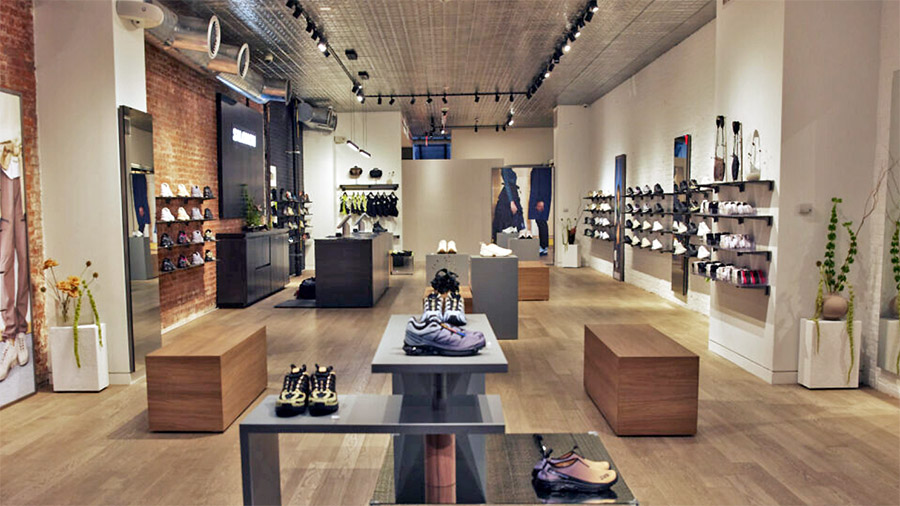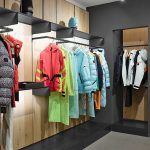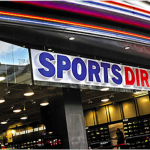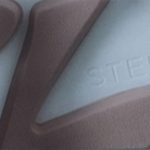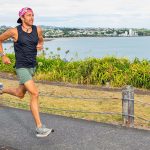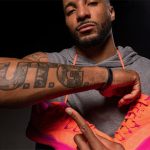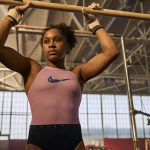Amer Sports, Inc., the parent of Arc’teryx, Salomon, and Wilson Sports, among others, reported that Outdoor Performance segment revenues increased 8 percent (+7 percent in constant-currency terms) year-over-year to $534 million for the third quarter, driven by double-digit top-line performance in Salomon footwear and apparel and strong DTC channel growth, especially in Asia Pacific and Greater China.
Sequentially, the increase fell short of the double-digit growth reported in the second quarter.
The Outdoor Performance segment includes the Solomon brand business and the Atomic and Armada snow sports brands.
 Amer Sports CEO James Zheng announced on a conference call with analysts that Salomon’s Chief Product Officer, Guillaume Meyzenq, shown right, was appointed president and CEO for the brand.
Amer Sports CEO James Zheng announced on a conference call with analysts that Salomon’s Chief Product Officer, Guillaume Meyzenq, shown right, was appointed president and CEO for the brand.
“We conducted a comprehensive search for the next Salomon CEO, including both internal and external candidates, and concluded that Guillaume is the right person to take Salomon to the next level,” Zheng offered. “I have worked closely with Guillaume the last several months as interim CEO. He has built a strong reputation during his 28 years at Salomon and is extremely well-respected throughout our company and the industry.
“Born and raised in the French Alps, an avid skier and outdoorsman, Guillaume embodies the core values of Salomon. He brings a strong track record of operational excellence and strategic innovation in diverse leadership roles across Salomon, including sales, product innovation and both softgoods and winter sports equipment. More importantly, Guillaume was instrumental in the doubling of Salomon footwear sales over the last five years, including creating and developing our key sports style category, which is now approaching one-third of Salomon sneaker sales.
“We have the right team and strategy in place, and I have full confidence in Guillaume to lead Salomon for the next stage of its growth journey,” concluded Zheng.
Turning to the quarter’s performance, Zheng said the increase was led by Salomon softgoods and partially offset by softer trends in Salomon winter sports equipment.
“Today, Salomon softgoods represents approximately two-thirds of the Outdoor Performance segment, up significantly from 54 percent in 2022,” Zheng noted. “We believe Salomon sneakers have an authentic and unique market position with technical features designed for the mountains but also great for everyday use. Our unique style and technical attributes are resonating with consumers at a time when they are more receptive than ever to wearing new sneaker brands. Long term, we expect Salomon softgoods to grow double digits annually.”
Zheng also noted that the higher-margin, fast-growing Salomon footwear franchise, which had been focused on technical footwear and trail running, still represents a very low share of the global sneaker market. The company aims to change that and focused on growing the lifestyle footwear market, particularly in Asia.
Zheng said that Salomon footwear continued to show strong traction in Greater China and APAC, where consumers love the brand’s footwear, which combines a trendy look with high technical features.
“In China, we have created a new category called outdoor sneakers, which especially resonate with the young consumer,” Zheng shared. “Our Salomon compact shop format in China is also working very well, profitable starting day one and four times more productive per square foot than [the] industry average. We are continuing to expand Salomon shops in Greater China, opening 39 net new Salomon shops in Q3, including both owned stores and partner stores, bringing our total count to 165 in Greater China.”
The CEO said the company expects to end 2024 with approximately 200 Salomon stores in China, with the opportunity to grow to several hundred locations over time in just Tier 1 and 2 cities.
“We have also begun testing the Salomon compact shop format outside China, with new locations in APAC and EMEA, including Tokyo, Singapore, and the Le Marais shop in Paris,” Zheng shared. “We recently opened our first Salomon flagship in Shanghai, a 5,400 square foot pinnacle brand expression in the affluent shopping district, Xintiandi, which combines both footwear and apparel in a comprehensive offering and highly immersive brand experience.”
Zheng also noted that Salomon opened a pop-up shop in downtown Manhattan’s SoHo neighborhood in October.
“This is our first branch store in the U.S. and comes ahead of plans to open one to two permanent New York stores in 2025. Residing in the old Arc’teryx SoHo location, the Salomon store is performing very well so far with strong response from both tourists and locals,” he said.
Globally, Amer plans to end the year with 404 Salomon stores, including owned and partner stores, doubling the count from last year.
Zheng said Salomon’s footwear and apparel are performing well in Europe, which is primarily driven by strong reorders. He also noted that Salomon’s sell-through rates drive higher preorder rates for the brand.
“In both EMEA and North America, Salomon sports style is still early in its long-term development,” Zheng offered. “We have evolved our go-to-market organization in both markets, more clearly separating the winter sports equipment sales team from the Salomon footwear team, which should help us reach our potential in both categories given their unique brand markets. We continue to be very excited about opportunities to translate our strong brand health into broader commercial success in the U.S., the largest sneaker market in the world.”
By channel, outdoor performance DTC grew over 50 percent, while Wholesale declined slightly, driven by continued soft wholesale market conditions in EMEA and North America for Salomon winter sports equipment.
By region, very strong growth in Greater China and APAC was partially offset by slower sales in EMEA and North America.
Company CFO Andrew Page said the Salomon business was a tale of two businesses in North America, with strong double-digit growth in softgoods offset by a more challenging environment for winter sports equipment.
“As we said last quarter, 2024 would be a slightly softer year for winter sports equipment due to slower trends in North America, where ski equipment sales are rebasing after a strong run through and beyond COVID,” Page noted. “This is in addition to cautious orders in EMEA after two tough snow seasons in Europe; however, given our great brands and scale advantages, we are taking market share as our businesses are down less than the market.”
Page said that in the longer term, although the company expects winter sports equipment to be a slower-growing business, the industry remains healthy, and consumer demand for ski vacations remains consistent and strong, irrespective of weather, especially as resorts have become adept at making their own snow.
Page said winter sports equipment now represents one-third of the company’s Outdoor Performance business, and long-term Amer expects this business to grow in the low-single-digits annually.
“Outdoor Performance adjusted operating margin contracted 40 basis points from last year’s record performance to 17.5 percent this year,” Page added. “This was driven by higher SG&A due to store and team investments to drive regional acceleration for Salomon in China and APAC, offsetting gross margins gains driven primarily by a favorable region, channel, brand and product mix.”
Looking ahead, Amer Sports forecasts Outdoor Performance segment revenue growth of ~8 percent and segment operating margins in the high single digits for the 2024 full-year period.
Images courtesy Salomon/Amer Sports, Inc./Guillaume Meyzenq, LinkedIn
See below for additional SGB Media coverage of the broader Amer Sports business for the third quarter.
EXEC: Amer Sports Sees Sharp Contrast Between West and East in Q3; Provides China Update
EXEC: Arc’teryx Outperforms Once Again in Q3 Despite Tough 2023 Comps
EXEC: Wilson Sports Business Returns to Double-Digit Growth in Q3; Bolsters Owned Retail

